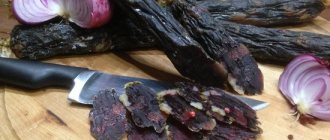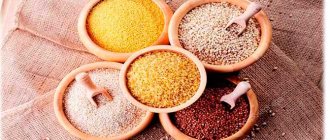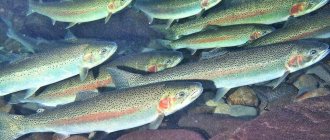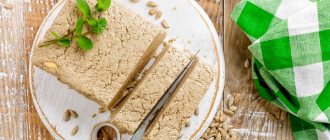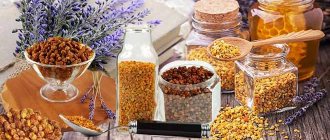Horse meat is the meat of horses consumed as food. Most often, this is the name for the product obtained from the slaughter of mares, stallions and geldings aged more than one year, but less than three years. Meat taken from animals less than one year old is commonly called foal.
Horse meat-based dishes are an important component of the national cuisines of Turkic, Mongolian and other nomadic peoples. Horse meat is consumed boiled, smoked, fried, dried, stewed, dried or salted. In addition, it is used to prepare sausages, basturma, frankfurters, sausages and semi-finished meat products.
When purchasing horse meat in stores and markets, you need to pay attention to external signs that allow you to assess its quality. Fresh meat always has a uniform purple color, a shiny, slightly moist surface, elastic consistency and a slight pleasant smell. Signs of stale, old or poor quality horse meat include:
- uneven color, brown or gray tint;
- strong specific odor;
- the presence of blood or mucus on the surface of the meat;
- yellow fat layers.
Meat from mares, stallions and geldings can be stored in the refrigerator for no more than 4 days. In the freezer, horse meat retains its nutritional properties much longer: when stored at temperatures from –12 to –17° C – about six months, and at temperatures not higher than –18° C – up to 10 months.
Description
Not many people know the benefits of horse meat. Very often people prepare dishes from the meat of young trotters up to 3 years old. But the most palatable and nutritious is the meat of foals 9-12 months old. To create horse meat, both adult cull horses and super-repair young animals are suitable.
Horse meat began to be consumed in the pre-Christian era. Calvin Schwab's book The Forbidden Kitchen states that horse meat was always served at the table during various occult ceremonies of the Teutons. According to the information of the famous wanderer Marco Polo, earlier the peoples of Central Asia used mares' milk in small doses to maintain strength, from which fermented milk drinks and cottage cheese, and horse blood were also prepared.
Today, horse meat is eaten mainly in Asia and Europe. On the Old Continent, the most optimal circumstances for breeding horses for meat are in the south of France and Hungary. Horse meat is especially popular in Kyrgyzstan, Kazakhstan and Mongolia. This meat is banned in English-speaking countries - Ireland, USA, Canada, Great Britain. It is also not eaten by gypsies and Jews, residents of Brazil, India and Spain (although this state is a major exporter of trotters).
Horse meat is quite tough meat. It has a specific aroma and taste. First it is marinated or smoked and only then boiled. It becomes soft only after several hours of cooking. Horse meat makes excellent sausages, for example, servelat or oriental kazy-karta - they are viscous, elastic, with a refined flavor.
Among the Turkic and Mongolian peoples, the most favorite dishes from this type of meat are shuzhuk, kazy, besbarmak, zhal and others.
In European countries, for example in Belgium, Sweden and France, horse meat is consumed raw. Often sliced meat is served as tartare, seasoned with onions, spices and herbs, or with hot sauce. In Japan, one of the traditional dishes - sashimi - is prepared from horse meat. In the southern regions of France, sausages made from crumbled horse meat are eaten - they are fried over an open fire, frying pan or grill. In Italian cuisine, this type of meat is a component of the “Spaghetti with Bolognese sauce” dish, and in Switzerland it is cooked in a deep fryer.
Is it possible to eat horse meat?
Answer to the question: “Can I eat horse meat?” ambiguous. Representatives of different nations have different attitudes towards horse meat. You cannot eat horse meat in Ireland, Great Britain, USA, Canada. Jews, gypsies, Indians, Spaniards and Brazilians do not eat it. For Mongols, Turks, Kazakhs and Kyrgyzs, horse meat serves as everyday food, and among the Japanese it is considered a delicacy.
Horse cutting diagram
image/svg+xml
Are horse legs used for food? Jellied meat is prepared from them. The dish turns out very dense, elastic, transparent and tender.
Compound
So what is horse meat good for? According to the USDA Nutrient Database, 100 g of this meat contains:
- 0.99 g ash;
- 63.72 g water;
- 4.6 g fat;
- 21.39 g protein.
Do you know if horse meat is healthy? It contains the following vitamins:
- 0.13 mg thiamine (vitamin B1);
- 0.1 mg riboflavin (vitamin B2);
- 0.38 mg pyridoxine (vitamin B6);
- 4.6 mg niacin (vitamin PP or B3);
- 1 mg ascorbic acid (vitamin C);
- 3 mcg cyanocobalamin (vitamin B12).
The beneficial properties of horse meat are also determined by the following macroelements:
- 221 mg phosphorus;
- 24 mg magnesium;
- 360 mg potassium;
- 53 mg sodium;
- 6 mg calcium.
Horse meat also contains microelements:
- 10.1 mcg selenium;
- 3.82 mg iron;
- 2.9 mg zinc;
- 144 mcg copper;
- 19 mcg manganese.
Chemical composition and calorie content of horse meat sausage
The benefits of horse meat are recognized; it is recommended for consumption as a source of valuable protein and a mass of minerals.
The calorie content of 100 grams of horse sausage is 377 kcal.
| Compound | Quantity |
| squirrels | 19 g |
| fats | 33.5 g |
| carbohydrates | 0 g |
| alimentary fiber | 0 g |
| water | 0 g |
The chemical composition of kazy is very rich and useful:
- potassium;
- sodium;
- phosphorus;
- copper;
- iron;
- magnesium;
- thiamine;
- riboflavin;
- nicotinamide;
- sulfur;
- vitamins B, A, E, PP.
Beneficial features
What are the benefits of horse meat? Its advantage is that it contains more complete protein than all other types of meat. It also contains many organic acids that improve the functioning of the gastrointestinal tract, have a beneficial effect on the body's metabolic processes, and also improve the intestinal microflora. Even though it takes longer to cook and stew horse meat than other types, due to the thick and coarse fibers, the nutritional value of this food is invaluable. Its calorie content varies from 119 to 185 kcal per 100 g of product.
It is known that horse meat (unlike other types of meat) does not contain cholesterol, it contains more water, complete protein and organic acids. It is also useful for its anti-sclerotic qualities.
This is a dietary and easily digestible product: if beef is digested in the body within 24 hours, then horse meat is digested in just three hours. What are the benefits of horse meat for men? There is an opinion that it has the best effect on male potency. Horse meat also neutralizes the harm caused by radiation. It contains almost no allergenic amino acids, as well as intricate compounds. This means that even allergy sufferers can eat this food.
Is it possible to have horse meat for pancreatitis?
People suffering from pancreatitis often ask whether or not they can eat horse meat. There is no doubt that the product will benefit patients and improve their condition. It stabilizes the functioning of the pancreas and speeds up recovery. But horse meat for pancreatitis can only be eaten boiled.
Horsemeat cooked over an open fire
Horse fat
Many people ask whether horse meat is healthy. Yes, very useful. It is known that it contains a minimum of fat, which differs significantly from both pork and beef. It is identical in composition to vegetable oils, and its beneficial qualities are predetermined by its pronounced choleretic effect and low cholesterol content. It is thanks to the first property that horse meat is best eaten by those who suffer from biliary dyskinesia and liver ailments.
The unique qualities of horse fat help a person recover faster from jaundice. And the fat itself is often used by cosmetic companies to create beauty-preserving products. In addition, it is used for burns and frostbite.
Horse breeding
Horse meat has a special taste and is a simple but favorite dish among nomadic peoples. Horses are raised on pastures, which requires a lot of land. Short-term (maximum 30 days) stall housing for fattening is allowed. If a horse is kept in captivity longer, this has the most negative effect on the taste of the meat and its consistency. Among agricultural sedentary peoples, the use of horse meat is, as a rule, not widespread.
The agricultural importance of horse meat depends very much on local natural and geographical conditions. Thus, throughout Europe, it is profitable to breed horses for meat only in Hungary. There are no natural pastures in Japan, so breeding horses there is not a cheap endeavor. At daimyo's feasts in the Middle Ages, horse meat was sometimes served, the value of which lay in its incredible cost.
Myth
There is a common myth among Europeans that horse meat tastes bad. How did he appear? It is probably due to the fact that at the time of the retreat from Moscow, Napoleon’s soldiers ate dead horses, using gunpowder instead of seasonings and salt, which caused countless food poisoning.
But many nomadic peoples have long understood that horse meat is very useful in the form of camp food, since it exhibits warming qualities when consumed cold. That is why in Asian countries horse meat can be bought at any butcher shop.
Dangerous qualities
Excessive consumption of horse meat can stimulate the development of diseases of the gastrointestinal tract, kidneys, bone and cardiovascular systems. This meat can be harmful to people who purchased it from unverified suppliers, as it can be contaminated with trichinella, the most dangerous parasites.
Therefore, horse meat must be subjected to heat treatment for a long time. It should also be remembered that this type of meat, like any other protein product of animal origin, is a source of purines, which are contraindicated in individuals with high levels of uric acid and gout. In such cases, you need to either completely exclude it from your diet or reduce consumption to a minimum.
Young stallions have a very active lifestyle, so there is practically no cholesterol or fat in horse meat. Thanks to this, fresh meat consists only of muscle tissue. You cannot save it for a long time, as it spoils very quickly. When frozen, the beneficial properties of horse meat are completely lost.
The benefits of horse meat for the human body
Horse meat is a low-fat, easily digestible product that can be consumed even by people with diseases of the digestive tract. Due to the high water content (70%), the product of horse slaughter is easily digested, so it can be consumed not only by adults, but also by children and the elderly.
Horse meat is indicated for people whose activities involve high physical activity (for example, athletes, miners), active mental activity, enterprise workers and residents of areas with high background radiation. It would be useful to include mares and geldings in the meat of people during the period of postoperative recovery, rehabilitation, in order to prevent injuries (especially in the elderly).
For adults
The beneficial properties of horse meat for adults, as well as for children, are determined by the composition of the product and include:
- No negative impact on the vascular system (low cholesterol).
- Stimulates the absorption of sugar, so horse meat is useful for diabetes.
- Normalization of metabolic processes. The presence of a high concentration of vitamin B1 in the product pushes it to a leading position in the “metabolism accelerators” rating. Therefore, the meat of geldings and mares is useful for losing weight.
- Improves potency, which is why horse meat is good for men.
- Beneficial effects on the nervous system. The microelements included in the product have a positive effect on nerve cells, helping to eliminate somnological disorders (insomnia, anxiety).
- Strengthening the protective functions of the human body. The vitamin E content in meat helps increase the body's resistance to infections and viruses.
- Improving the condition of connective tissue in the human body.
- Improving the outflow of pancreatic secretions. The fat is rich in vegetable fats, therefore, horse meat is useful for pancreatitis, liver diseases and biliary dyskinesis (consume with permission from the attending physician).
- Improving the condition of the hematopoietic system and blood composition, thanks to the iron content. The product is prescribed for use by persons suffering from anemia.
- Strengthening the heart muscle and normalizing heart function.
This is only a small part of the beneficial properties of horse meat, which allows it to be ranked high in the “Healthy Meat Products” rating.
For children
Horse meat contains virtually no allergens, so this product can be consumed by children (even allergy sufferers), but only after consultation with a pediatrician. Benefits of horse meat for children:
- Boosting immunity.
- Acceleration of bone tissue regeneration due to the high phosphorus content.
- Replenishment of protein deficiency in the body during the period of active growth.
- Warming effect (when horse meat is consumed cold).
- Combating the consequences of radiation exposure.
In the absence of contraindications, the pediatrician allows the product to be introduced into complementary foods for a child over 6 months old. The initial serving is no more than 5 g. In the absence of allergic reactions, the serving size is gradually increased.
Important! Do not introduce complementary foods without consulting your pediatrician. If an allergic reaction occurs, report it to a medical facility immediately.
Can pregnant and lactating women eat horse meat?
Permission to eat horse meat for women carrying or nursing a child can only be given by a doctor observing the expectant mother and her child. Although this product is hypoallergenic and has a lot of positive properties, it can also be harmful in large quantities and if preparation rules are not followed.
Pregnant and lactating women are most often allowed to eat boiled or stewed horse meat, since such meat is soft, rich in macro- and microelements, vitamins and does not irritate the walls of the digestive tract.
Important! If the doctor authorizes the specified product, he himself establishes the norms and frequency of consumption of horse meat for women, the benefits of which are not harmful to the baby.
Eating horse meat for weight loss
During the period of weight loss, it is possible and even necessary to consume horse meat, since it is a dietary product rich in macro- and microelements, vitamins, and animal fats. The main thing is to know the rules of preparation and features of use.
To lose about 5 kg of excess weight, it is enough to adhere to the following diet for 7-10 days:
Recommended reading: Benefits of boiled beets for the body
- for breakfast - porridge in water with 150 g of boiled horse meat and green tea;
- for lunch - a portion (200 g) of stewed horse meat with vegetables (carrots, tomatoes, potatoes, celery, bell peppers, onions, garlic), with freshly squeezed fruit juice;
- for dinner it is allowed to eat a light vegetable salad with a serving of meat of 120 g (ready);
- Before going to bed, you are allowed to drink 200 ml of fermented milk product (fermented baked milk, kefir, kumiss).
Recommended reading: Benefits of tomatoes for the body
Diet meat
So, we have studied almost all the beneficial properties and contraindications of horse meat. For nutritionists, this meat is a valuable component due to its low calorie content. They developed many diets based on the consumption of horse meat. In just a couple of weeks of using the diet menu, you can lose up to 5 kg of excess weight without harming your own health.
We have already said that horse meat contains many organic acids. Due to this, it frees the body from toxins and improves its metabolic processes.
Horse meat is hypoallergenic, so it does not contribute to allergies. It is useful to include it in the diet of adults and children suffering from lactose intolerance (inability to digest cow's protein), often accompanied by allergic reactions to chicken eggs and meat.
How to select and store
Horse meat is very similar in appearance to beef, only it has a darker shade. If, when you press it with your finger, the meat quickly restores its shape and is also dense and elastic to the touch, then this is a fresh and high-quality product. Like any other meat, it should look moist and slightly shiny. But if you apply a dry cloth to it, there should be no wet marks on it. The fat should be yellowish in color, in young individuals it should be almost white.
Horse meat cannot be stored for a long time. When frozen, it loses its valuable and beneficial properties, as well as its taste. It is recommended to prepare long-term canned goods from horse meat, such as stew, if there is more meat than needed.
Recommendations
When choosing horse meat, weigh the potential harms and benefits of the food, especially if this is your first time encountering it. Fresh meat resembles beef and has a dark red color, but is dense and has a pronounced elasticity. When pressed, it does not wrinkle and quickly acquires its primary shape.
The maximum amount of horse meat consumption per day for women is no more than 200 g, for men - within 400 g. This meat should be present on the table no more than 3 times a week.
In order to cook up a tasty dish that will only benefit the body, you must follow the following canons for processing horse meat:
- The shoulder, back and thigh areas of the carcass are best suited for creating dishes.
- For tenderness, cook the meat for at least 2-3 hours.
- Soak fresh meat first in water and then soak in the marinade.
- To reduce the specific smell, season the carcass with onions, garlic, and stuff with prunes during cooking.
- Horse meat is best eaten boiled, stewed with vegetables or baked in the oven. The best side dishes for it are rice and potatoes.
Cooking methods
Horse meat is very tough. To make it soft, it is recommended to cook for several hours (at least two), after soaking in water and marinating. Long-term cooking will also avoid infection with parasites.
Horse meat steak in 20-30 minutes
Most often, horse meat is boiled or stewed. Roasted meat (as well as from old animals) may have an unpleasant taste and odor. In addition, it is saturated with carcinogens and causes disruptions in the gastrointestinal tract.
To get rid of the specific smell, add onions or garlic to the meat and stuff it with prunes.
A stew made from horse meat with vegetables and spices has an exquisite taste. Horse meat goes best with turnips, carrots, peppers, tomatoes, celery, onions, and garlic.
Horse sausage (kazy)
Is horse meat sausage healthy? Horse sausage (kazy) is a Central Asian national dish. In Mongolia, Kyrgyzstan, and Kazakhstan, nomadic tribes still prepare it by hand with the whole family today. Men slaughter 2-3 year old horses, bred specifically for this purpose, and also cut the meat. Women process the intestines and make kazy.
Horse sausage is as healthy for humans as horse meat. It is a worthy decoration for the holiday table, very pleasant to the taste and an environmentally friendly dish. The filling for kazy is prepared from the rib segment of a horse, cutting it into strips.
Next, the meat is seasoned with a mixture of black pepper, salt and garlic and stuffed tightly into well-washed intestines. The shape of the sausage can be very different, but the length is no more than 70 cm. Kazy is sent to a dry place to be soaked in spices, and then smoked, fried, dried or boiled. Sausage is eaten both as an additive to pilaf and in its natural form.
In addition to kazy, such types of horse sausage as shuzhuk and makhan are very popular. The heat treatment of shuzhuk is identical to kazy, but the filling is minced meat from any segment of the carcass.
Makhan is a “dry” or dry-cured sausage, very specific and dense. It is prepared from fat and horse meat with seasonings.
Use in cooking
Horse meat is quite tough meat. Preparing it as food requires a significant amount of time. It is recommended to consume meat from young stallions or horses under three years of age. In older individuals, the meat is very tough and has an unpleasant odor when processed. It has a specific smell and taste. But it is no more specific than, for example, the smell and taste of lamb. Some people believe that horse meat has a distinct herbal flavor. This meat can be fried, stewed, boiled. It is used to prepare delicious stew, gourmet sausages and frankfurters. It is most common in national Asian cuisine. It is included in such dishes as: beshbarmak, kyzdyrma, excellent horse sausage “kazy”, incredibly tasty Tatar azu, as well as delicious tartare. Sometimes horse meat is used raw, but this is quite unsafe for health. For many dishes, horse meat is used already boiled.
This meat turns out to be very tasty when smoked. Basturma is prepared from it. Potatoes, stewed vegetables, and rice can be served as a side dish.
Horse meat goulash
To prepare the dish you will need:
- horse meat - 0.5 kg;
- flour - 20 grams;
- tomato paste or juice - 20 grams;
- butter;
- sour cream;
- horse meat broth - 1 glass;
- carrots - 1 piece;
- salt pepper;
- greenery.
Pre-boil the horse meat, cut into pieces and pour in hot broth. Put on fire, add sour cream and salt. Simmer over low heat for about 30-40 minutes. While the meat is stewing, you can prepare the sauce. To do this, fry the flour in butter and add tomato paste. Pour the resulting mixture into the meat, mix well and add finely chopped carrots. After this, simmer the dish for another 20 minutes. Literally a minute before readiness, sprinkle with herbs.


